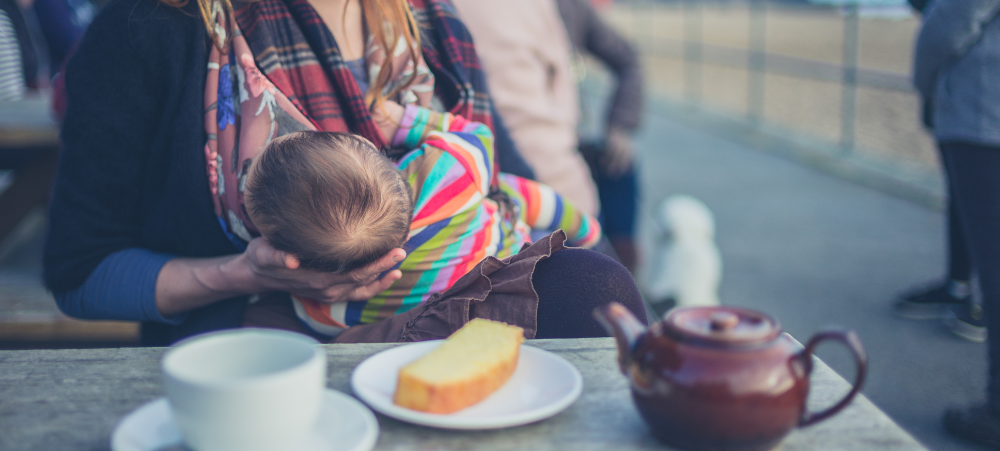How to get ready to breastfeed?
Milk Galore, a brand made for mommies to assist with the increase the flow of breastmilk, would like to advise Mommies on how to get ready to breastfeed especially when nearing the end of pregnancy and planning to breastfeed baby. Below are some helpful hints on how to ensure the process goes hump less.
Here’s how to prepare for breastfeeding your newborn:
- Doing some research is key. Learn the basics about breastfeeding.
- Reading up on good books on breastfeeding, reading on breastfeeding tips on social media or trusted websites so that Mommy can educate herself on the benefits of breastfeeding. These are helpful during the initial challenges you might face and can help you prepare for your baby’s first few days of life.
- Support group are great for community support. Many hospitals and pediatricians’ offices have a support group for breastfeeding moms. These meetings are meant to give new moms community as they learn the ups and downs of breastfeeding.
- Check out lactation consultant close to you. These professionals can assist a great deal especially the first few weeks of your newborns life assisting with monitoring weight, troubleshoot latch issues, and address any challenges that might arise as you and your baby learn to breastfeed.
- Prepare to pump with assistance from Milk Galore products to help stimulate the flow of milk as a natural supplement. Ensuring enough food is available for the baby is crucial so pumping as a mom is important, and then some moms will pump exclusively as a way to breastfeed their baby. Mom can educate helfself on pumping and storing breast milk. Moms going back to work need to discuss with their employers on appropriate place to pump.
- Talk with your partner about how they can support you as a breastfeeding mom. A lot of your time during the first months of your baby’s life will be spent skin-to-skin, nursing your little one. Your partner might not be able to nurse your baby, but they can take on more housework, care for older children, and deliver water and snacks to you to make sure your needs are being met.
- Get close right away. Immediately after you give birth, place your baby skin-to-skin on your bare chest. (You can also do this after a C-section; just ask your medical staff for extra support to place your baby safely on your chest.) When babies are left undisturbed on Mom’s bare chest, it wakens their feeding instincts.
- Start breastfeeding immediately after you deliver your baby. Breastfeeding shortly after birth is associated with increased chances of breastfeeding success. Your baby may be sleepy at first but more awake the second day, and they may cluster feed at night. Follow their hunger cues and feed your baby on demand.
- Enlist your friends and family for help. Breastfeeding will keep you busy, especially when your baby is a newborn. Friends and family can help by dropping by meals, spending time with your older kids, and helping out around the house. But limit visits if they interfere with breastfeeding and being skin-to-skin with your baby. If possible, ask your partner to be a gatekeeper at the door (greeting visitors, accepting food or gifts, and relaying information) so you can rest.
What do you need for breastfeeding?
These products can make breastfeeding more comfortable and convenient:
Milk Galore products as a natural stimulant to increase flow of breastmilk. Only does it increase milk but also a natural supplement for iron. Dependent on preference of mother available in juice and rooibos.
Available at www.milkgalore.co.za
Nursing bras are comfortable and provide the extra support your larger-than-usual breasts need. They come with flaps that you can easily undo at feeding time. It’s best to wait until the last couple of weeks of pregnancy to shop for new nursing bras – this is when your breasts will be closest to their postpartum size. That said, once your milk comes in your breasts may grow another size or two! Keep that in mind when buying.
Nursing tops and pyjamas have convenient flaps that allow you to breastfeed easily and discreetly. Some nursing tanks are very supportive and can work as a bra and top in one. Note: In the early days of breastfeeding, you may just want to wear a comfy button-down shirt or robe so you can easily keep your baby skin-to-skin.
Nursing pillows are specially designed to support your baby while you’re nursing, and can help you avoid straining your shoulders or neck during feeding sessions. They’re more convenient – and better at keeping your baby in position – than regular pillows.
Nursing pads. It’s normal for your breasts to leak while you’re nursing, and another baby’s cry or the sight of an infant can bring on a gush of milk when you least expect it. Disposable nursing pads (or reusable, washable ones) will keep you and your shirts nice and dry.
A breast pump. Even if you’re not planning to pump regularly, a breast pump can be a useful tool – to help relieve engorgement, for example. Many health insurance plans cover breast pumps, so check with your insurer before buying a pump.
Bottles and nipples. If you’ll be feeding your baby pumped breast milk, you’ll need a selection of good bottles and nipples. Some babies prefer one brand over another, so it’s a good idea to avoid stocking up until you learn which bottles and nipples your baby likes best.
Other breastfeeding accessories. Nipple cream or balm can help relieve sore nipples, and hot/cold gel packs can soothe swollen or sore breasts. Some moms also like to have a nursing cover for breastfeeding in public and breast milk storage bags for storing pumped milk.
- Milk Galore on why breastmilk is best? - February 14, 2023
- Getting ready to BREASTFEED! - December 9, 2022
- Pumping and Storing Breastmilk - October 21, 2022





